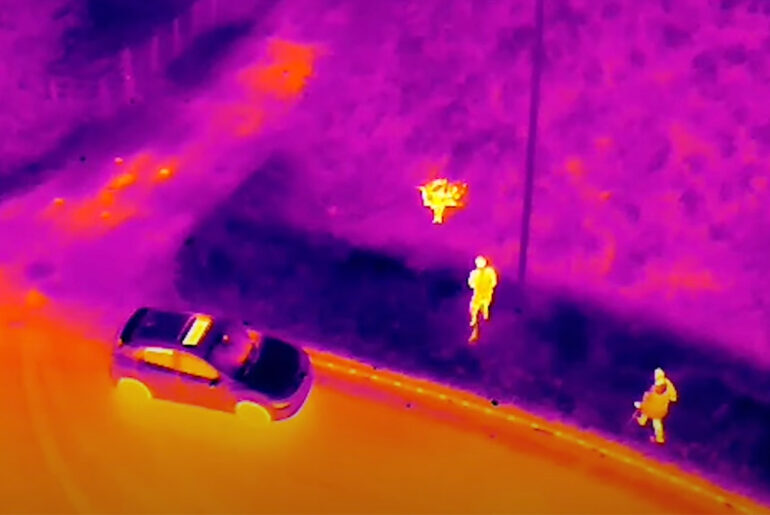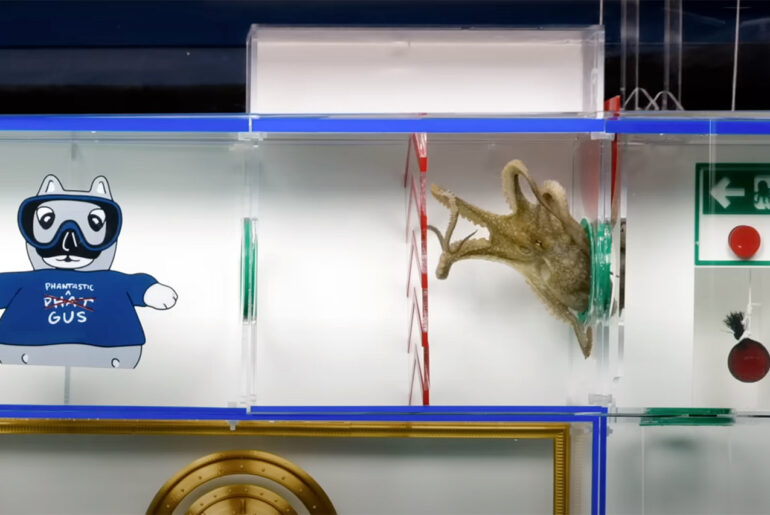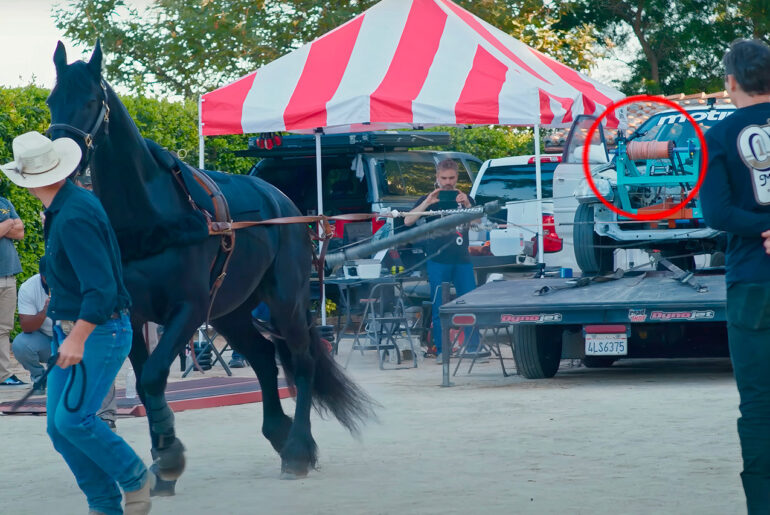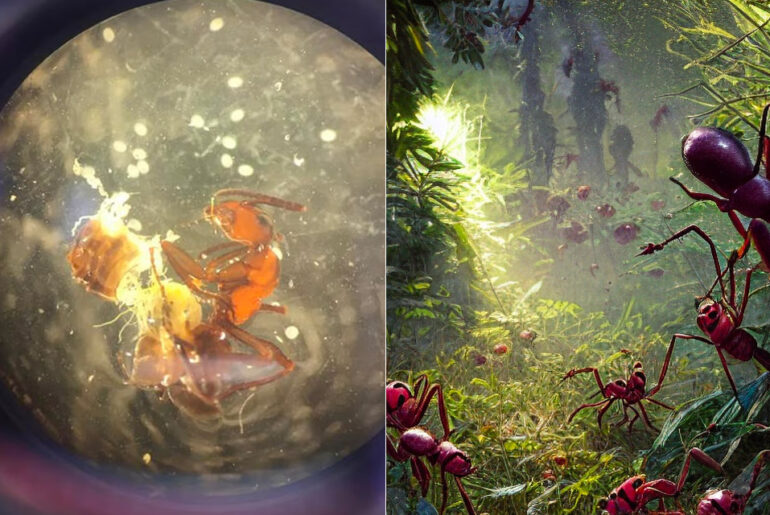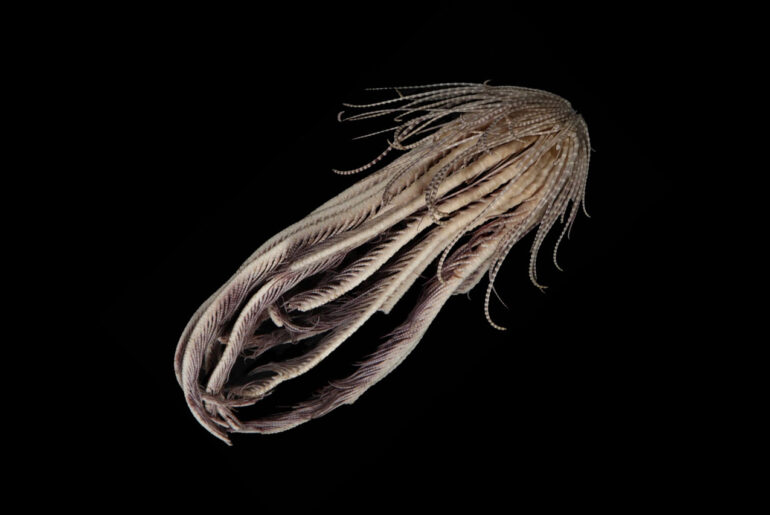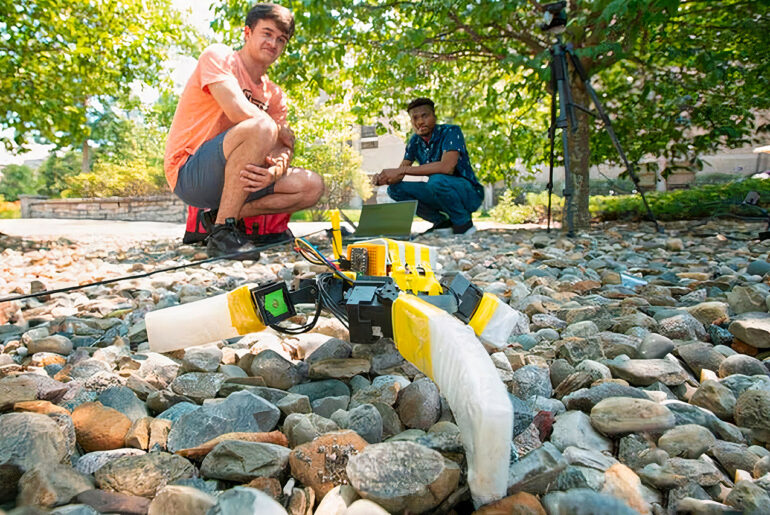
The diving bell spider isn’t something from a science fiction movie, but rather the only arachnid that lives underwater in an air bubble. Technically speaking. it breathes air and then traps the gas in a dome-shaped web suspended between aquatic plants.

Photo credit: Carlos Gauna/The Malibu Artist
Wildlife filmmaker Carlos Gauna and UC Riverside biology doctoral student Phillip Sternes may have captured the first ever images of a newborn great white shark using a drone. The two were scanning the waters for sharks on July 9, 2023, near Santa Barbara on California’s central coast when they spotted something they’ve never come across before.

We have seen the future of pet doors, and it’s this Flappie AI cat door. That’s right, it utilizes artificial intelligence to recognize various objects, such as birds or mice, that cats may bring home as prey. If these objects are detected, the flap remains closed and prevents your pet from bringing the prey into the house.

Virtual reality goggles for mice just might be the strangest VR gadget yet, but researchers at Northwestern University have found that they could be quite useful in the right setting. When placed on a mouse and given a choice to either run on a treadmill or be given a treat reward, they often choose the former.

Mark Rober’s 250-foot elephant toothpaste volcano was a sight to behold, but once set in motion, the experiment concluded far too quickly. His latest project was creating a 9-part underwater obstacle course for his pet octopus that was a bit more complicated.

Ever wonder just how much horsepower a real horse has? If so, Donut Media and Adam Savage have you covered with their latest experiment. Scientifically speaking, a horsepower (hp) refers to a unit of measurement for power, or the rate at which work is done – roughly 550 foot-pounds per second (745.7 watts).
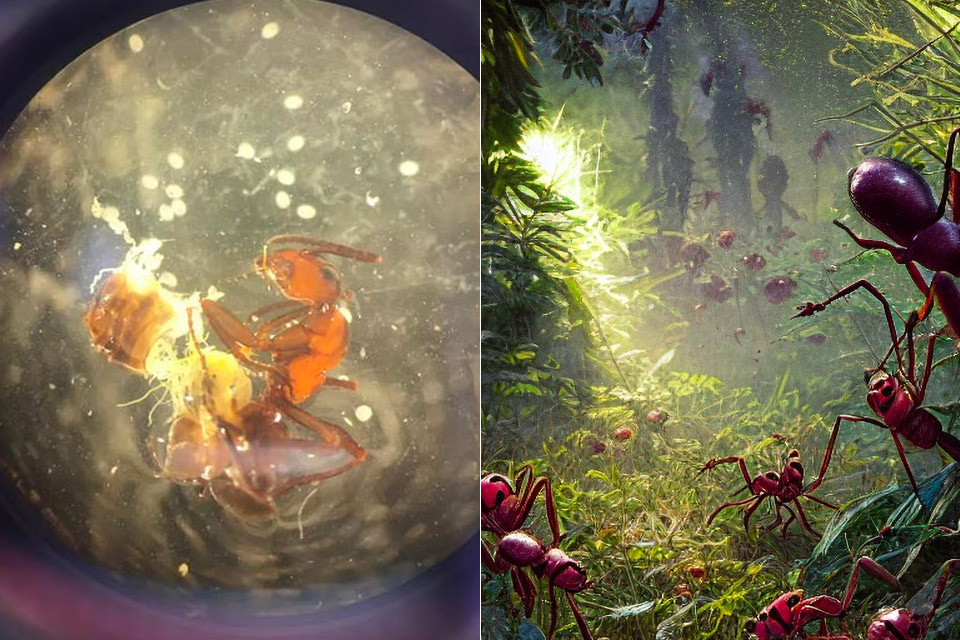
Photo credit: Brian Lund Fredensborg
University of Copenhagen researchers have discovered a strange parasite that transforms seemingly normal ants into zombies during specific times of the day. These liver flukes essentially take over the ant’s brain and control when they climb up blades of grass for grazers to eat.. Once the ant is infected, they multiply in the hundreds, with one parasite taking over the brain and influencing its behavior.

Scientists from the Scripps Institution of Oceanography at UC San Diego have discovered a new Antarctic feather star species with 20 arms and a strawberry-shaped body. Unlike other invertebrate ocean animals, feather stars stand out for their ‘large’ size and alien-like appearance’ when swimming.

MRMC’s CineBot Mini is great for live-action camera shoots, while this robotic sea turtle, built by engineers at the University of Notre Dame, mimics that varied gait patterns of their real-life counterpart. It was designed using data collected from zoological studies on the morphology, gait patterns and flipper flexibility of multiple sea turtle species, thus enabling engineers to maximize adaptability and versatility.


